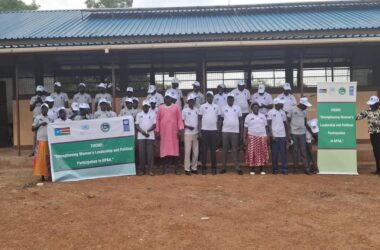By Emelda Siama John Lopula
The national ministry of health and partners have released the routine Antenatal Care (ANC) Sentinel Surveillance 2022 result for HIV, Syphilis and Hepatitis B data Thursday.
It was the seventh sentinel surveillance conducted in South Sudan following the previous ones held in 2007, 2009, 2012, 2017, 2020, and 2021.
Routinely collected data at antenatal clinics for the data period May-July 2022 was extracted from 69 ANC sentinel surveillance site with a maximum of 300 clients per site across the country.
Director of Antenatal Care at the national Ministry of Health (MOH) Dr. Agai Akec said a total of 14,928 record of pregnant women who came for their first ANC visit during the period were extracted from ANC registers between May and July 2022.
He was speaking yesterday during a one-day dissemination workshop for Routine ANC Sentinel Surveillance 2022 results release.
“The record of 14,928 first ANC clients between May and July 2022 were extracted from 69 out of the 78 sentinel surveillance sites in South Sudan. 14,228 (95.3%) were tested for HIV and 11,311 (75.8%) tested for Syphilis while 4.2% for Hepatitis B but was not estimated in the 2022 survey,” Akec stated.
Dr. Agai said the median age of the women were 23 (IQR 8) with 56.4% of them made up of 25years old young women. Nearly one third 34.0% were in polygamous marriage and 4.4% never married. Nearly 51.7% had no education with only 1.2% reached collages, university and above, one quarter 26.9% of the pregnant women were prim-gravid.
The result saw however HIV prevalence being higher in rural areas 2.0% compared to Urban\per-Urban 1.8%. Women in the age group 40-44 had the highest HIV prevalence 4.6% while 15-19 years had a prevalence of 1.0%.
“The Widowed pregnant women had the highest 14.7% HIV prevalence followed by divorced or separated 8.9% and the single never married 4.7%. Polygamous and monogamous had lower HIV prevalence.
Mayom county in Unity state and Ezo county of Western Equatoria state are leading in the highest HIV prevalence of 17.0% and 10.7% respectively. The highest HIV prevalence among the sentinel sites was at Mayom PHCC 17.0% followed by Ezo hospital 16.1% and Yambio hospital 9.6%. Nearly half 49.3% of the sites had HIV prevalence below one percent.”
The ANC sentinel surveillance result also presented Jonglei State with the highest Syphilis prevalence at 11.1% followed by Northern Bahr el Ghazal state with prevalence of 5.6% and Central Equatoria State presented the lowest Syphilis prevalence of 0.3% Eastern Equatoria State 0.8% HIV prevalence, 2.0% syphilis prevalence.
“The national prevalence of HIV and Syphilis was estimated at 1.9% (95% CI 1.7-2.2) and 2.7% (95% CI 2.4-3.0) respectively,”
Dr. Agai stated that there was a reduction in HIV prevalence among pregnant women attending ANC from 2.6% to 1.9% although the estimate is closer to the 2021 national HIV prevalence 2.1% for adult aged 15 years and above.
This therefore might not reflect a real change in HIV prevalence, there is also variation in HIV prevalence across the state, sentinel sites and marital status.
“Mayom County in Unity State and Ezo County in western Equatoria State had the highest HIV prevalence but the prevalence for Mayom County might not be representative since only one site participated,” Agai remarked.
“Syphilis prevalence was the highest in Jonglei State and the lowest Central Equatoria State. There is need to target widowed, divorced, separated and single never married women with HIV preventive services to reduce HIV transmission in this group as well as increased intervention in Syphilis screening among pregnant women during ANC visits,” Dr. Agai advised.
HIV/AIDS remain one of the most serious public health challenges despite the Global commitment and gain which have been made. Globally there were 38.4 million people living with HIV by end of 2021 of which 28.7 million were accessing antiretroval therapy.



